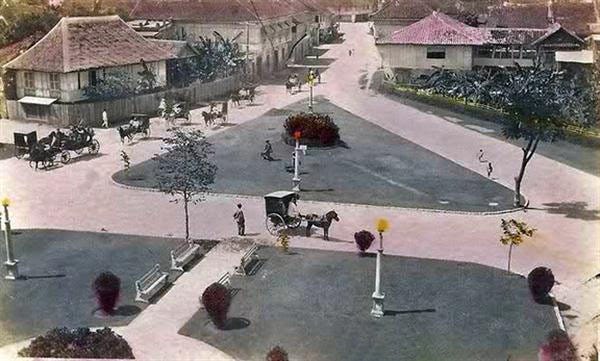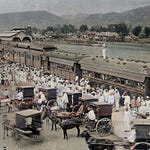Welcome to another episode of "Lost Landmarks of Cebu," the podcast where we dig deep into the mysteries of the past, uncovering forgotten tales and lost landscapes. I'm your host, John Paul, and today we take a journey back in time to explore the lost landmarks and green spaces of Cebu City. Join me as we explore the fascinating history of Cebu's forgotten parks and the transformation of this city's landscape.
In a city bustling with narrow roads, towering buildings, and the constant buzz of urban life, finding a peaceful green oasis can be a rare treat. Today, we'll take you on a nostalgic journey through time to discover the lost parks of Cebu and understand why these serene spaces have all but disappeared.
In the days of old, during the Spanish colonial era, open spaces were essential for community gatherings, discussions, and celebrations. Parks and public areas were scattered throughout the city, each with its own unique character and purpose.
But as Cebu grew, so did its need for modernization. The Americans arrived, bringing with them infrastructure and a vision for a new city. Wide radial boulevards, landscaped parks, and grand public buildings reshaped the cityscape. However, this transformation had unintended consequences.
The allure of shopping malls began to replace the charm of parks. Consumerism and materialism took hold, and the mall culture started to thrive. In the Philippines, this cultural shift is known as 'malling,' where people spend hours in air-conditioned shopping centers, replacing open parks as communal spaces.
After the devastation of World War II, the city was rebuilt, and many old structures and parks were left in ruins. The focus shifted towards modern developments – high-rise buildings, mega shopping malls, and gated communities sprang up, leaving little room for green spaces.
But why do we need these open spaces now more than ever? Shopping malls may offer convenience, but they've also contributed to the fragmentation and division of the city. Malls have become private property, and while they may appear green and eco-friendly, they often exclude the lower-income class.
Now, let's delve into some specific lost parks of Cebu:
Plaza de Recoletos - Once a vibrant venue for public gatherings, it later became a trade center, losing its green charm.
Plaza de Amadeo I - Named after King Amadeo I of Spain, this plaza's history is marked by political turmoil and change.
Plaza de General Loño - Named after the Spanish war hero, this plaza's size gradually decreased as new structures were built.
Plaza Rizal - Though it retains its public status, it has seen periods of decline and extensive renovations.
Plaza de Armas - This iconic square remains an essential entry point in Cebu, connecting Fort San Pedro and the Government Provincial building.
Plaza Mayor - Evolving from a vacant space, it eventually became a bustling civic area and boasts a memorable obelisk dedicated to Miguel Lopez de Legazpi.
Plaza Libertad - Renamed to emphasize American liberation, it transformed into Plaza Independencia after the war.
Plaza de Palacio - This space near the Palacio Obispal and the Cebu Metropolitan Cathedral witnessed historical events and served as a gathering place.
Plaza de Parian - Once the heart of the Chinese enclave in Barrio de Parian, this plaza tells a tale of changing demographics and fortunes.
Plaza San Nicolas - The main public space for the local inhabitants, it held significance due to its proximity to San Nicolas de Tolentino Church.
As we reflect on these lost parks, it's essential to recognize their historical importance and the need for accessible open spaces. They not only preserve our heritage but also enhance our well-being and environment.
In a world where malls dominate, we must ensure that parks and plazas remain places for everyone, not just the privileged few. Let's cherish the parks we have and, perhaps, rediscover the magic of spending time in these green pockets of tranquillity.
That wraps up our journey into the lost parks of Cebu. If you know of any other forgotten parks or have stories to share, don't hesitate to reach out to us on our Facebook page.
Thank you for joining us today. Until next time, remember to take a break from the hustle and bustle of life and enjoy the beauty of the outside world. Take care, Cebu!








Share this post